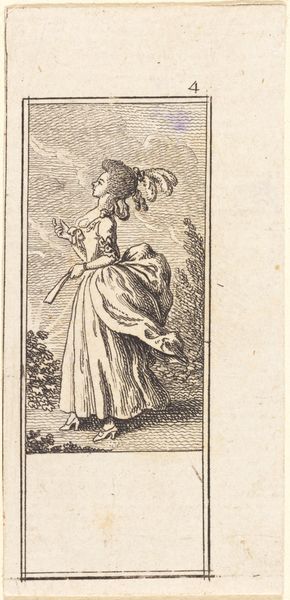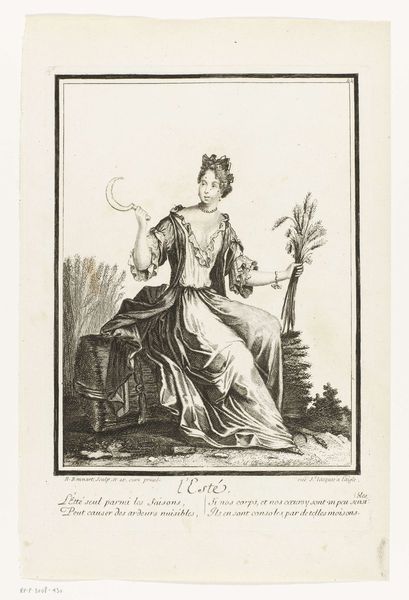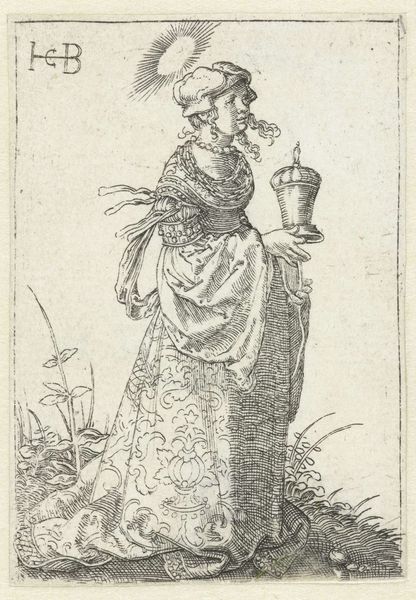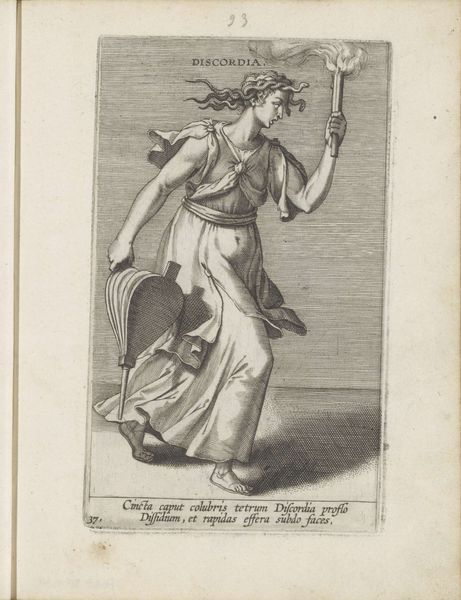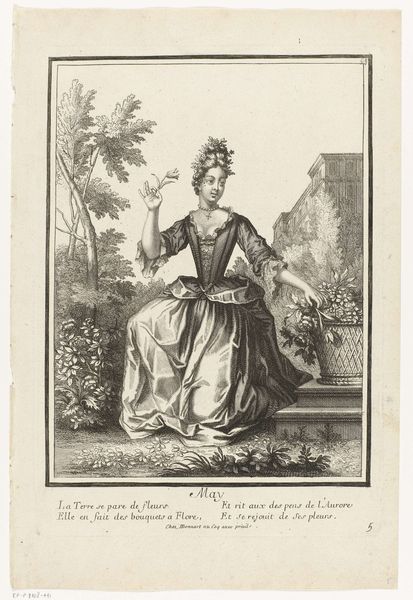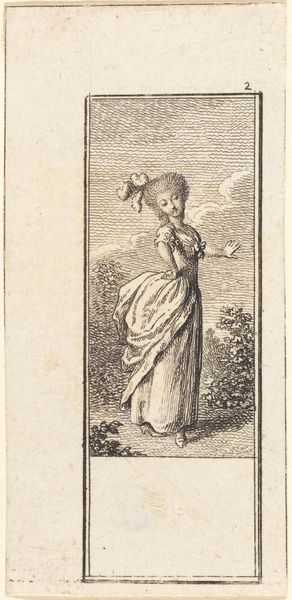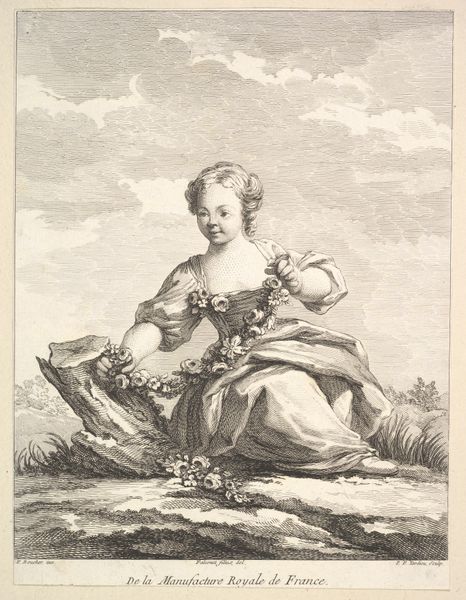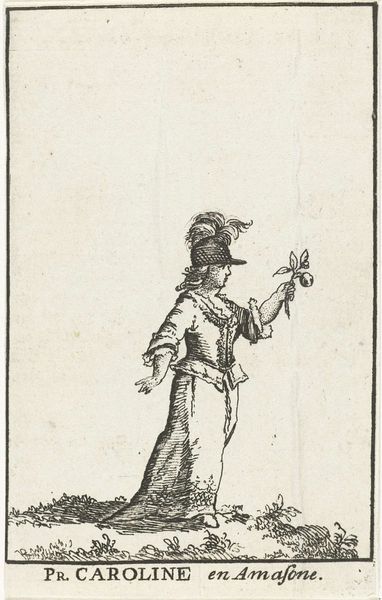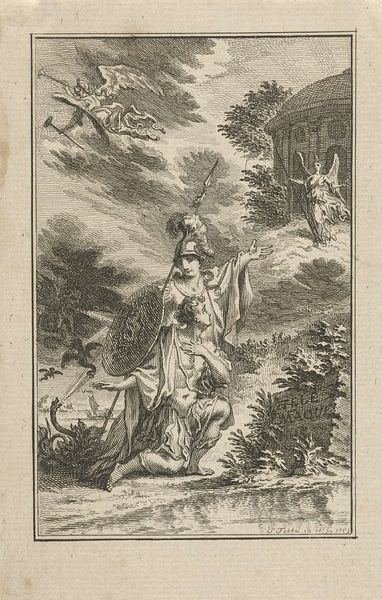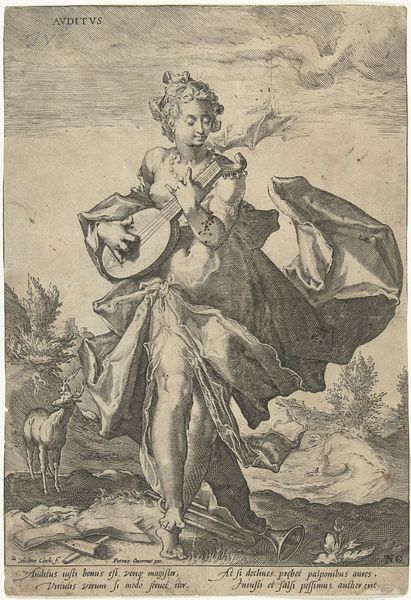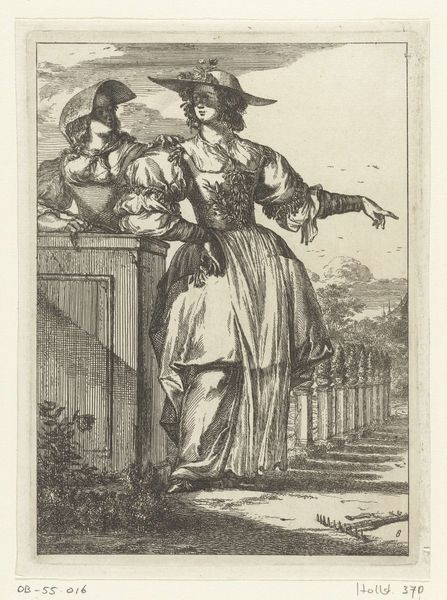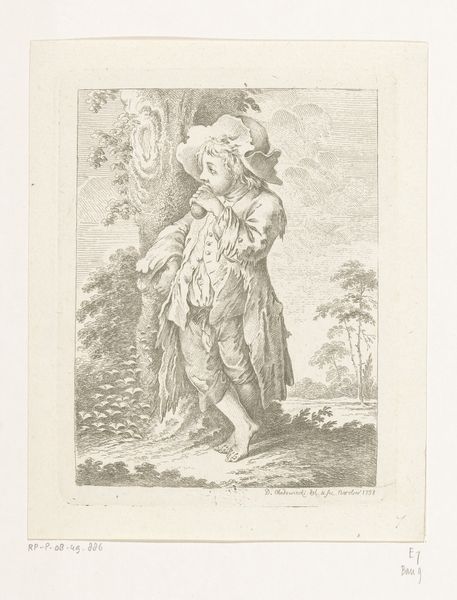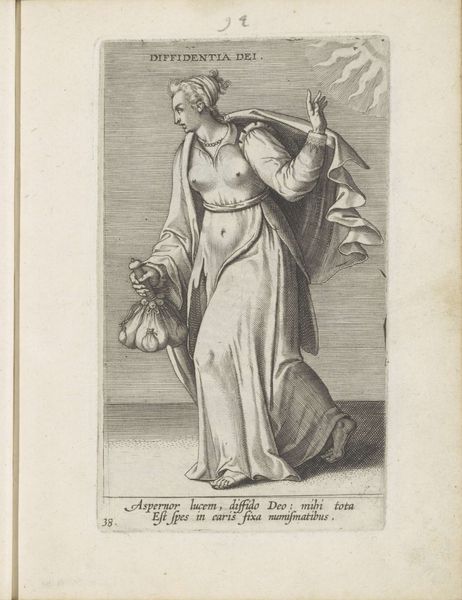
print, engraving
#
allegory
#
baroque
# print
#
old engraving style
#
caricature
#
figuration
#
genre-painting
#
engraving
Dimensions: height 273 mm, width 194 mm
Copyright: Rijks Museum: Open Domain
Editor: Here we have Henri Bonnart’s "Zomer," made sometime between 1652 and 1711. It's an engraving, so it's quite detailed and delicate. I find the figure striking, particularly how the folds in her dress are depicted, almost like sculpted fabric. What catches your eye in this piece? Curator: Well, considering its production, what interests me is how this print – one of presumably many – participated in the wider dissemination of allegorical representations of summer. The lines were not spontaneously created: They represent labor. Each mark etched into the metal plate speaks to a deliberate, skilled action. Consider how the mass production of such imagery served both an economic and social function. It normalized certain visual languages, including how seasonal work might be perceived. Editor: So, you're saying that even something that looks almost like fine art was really tied to economic systems of production and consumption? Curator: Precisely. This wasn’t necessarily ‘high art’ in the sense of unique creation. Prints were commodities. They could decorate homes, circulate ideas, even function as a form of accessible entertainment for those who could afford them. The work was reproductive. But think of the artisanal knowledge involved: The precise pressure applied, the chemistry involved in the etching process… Editor: That's fascinating! I hadn’t considered the labor behind something seemingly so… idealized. Thinking about this less as a portrait and more as an output, I am reminded that the process shapes its impact. Curator: Exactly! Considering materials and labor provides entry to richer questions. Next time we see an engraving, let's consider whose hands made it, for what purposes, and within what networks of exchange.
Comments
No comments
Be the first to comment and join the conversation on the ultimate creative platform.
